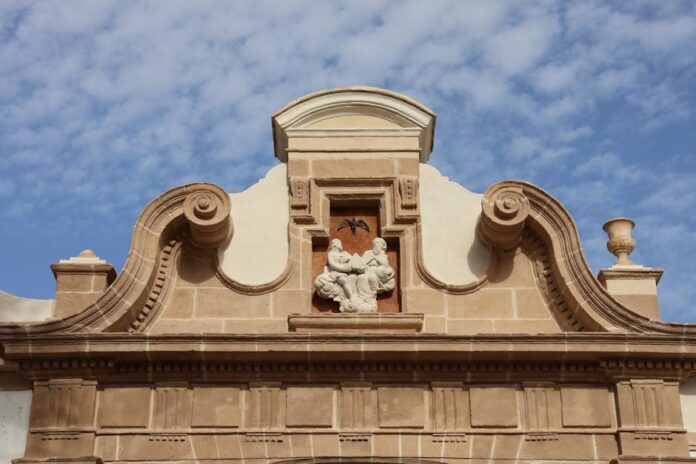⏱️ 4 min read
Ancient civilizations left behind incredible architectural marvels that continue to fascinate and inspire people today. From innovative construction techniques to mysterious design elements, these structures reveal remarkable insights into past societies and their technological achievements. Here are some fascinating revelations about ancient architectural wonders that showcase human ingenuity across millennia.
The Secret Mortar of Roman Concrete
Ancient Roman concrete has proven more durable than its modern counterpart, lasting over 2,000 years in some cases. The secret lies in its unique mixture containing volcanic ash called pozzolana, which creates a chemical reaction that actually strengthens the concrete over time. Scientists have discovered that seawater infiltration causes the formation of new minerals within the concrete, effectively self-healing any cracks that develop.
Egyptian Pyramids’ Perfect Alignment
The Great Pyramid of Giza is aligned to true north with an accuracy of 0.15 degrees, an astounding feat achieved over 4,500 years ago. This precision would be challenging even with modern technology, yet ancient Egyptians accomplished it using simple tools and astronomical observations. The pyramid’s base is also perfectly level, with corners that differ by only a few centimeters in height.
Earthquake-Proof Incan Architecture
The ancient Incas developed an ingenious construction technique called ashlar masonry, where stones were cut to fit together so precisely that not even a knife blade could fit between them. This method, combined with their trapezoidal doorways and inward-leaning walls, created structures that could withstand powerful earthquakes, as demonstrated by many buildings that remain standing today in seismically active Peru.
The Acoustic Marvels of Chavin de Huantar
This ancient Peruvian temple complex featured sophisticated acoustic engineering. Its underground corridors and chambers were designed to amplify and transform the sound of rushing water from hidden canals, creating effects that likely enhanced religious ceremonies. The architecture could also manipulate the human voice to produce jaguar-like roars, demonstrating advanced understanding of sound properties.
Greek Temples’ Hidden Mathematics
Ancient Greek architects incorporated the golden ratio (approximately 1.618:1) into their temple designs, creating aesthetically pleasing proportions that still influence architecture today. The Parthenon’s facade demonstrates this mathematical relationship throughout its dimensions, showing how ancient builders understood complex geometric principles.
The Great Wall’s Construction Secrets
Contrary to popular belief, the Great Wall of China wasn’t built using just stone and brick. Its core was made of rammed earth, strengthened with rice flour mortar. This sticky rice mixture created an incredibly strong binding material that helped the wall endure for centuries, proving more durable than pure lime mortar.
Angkor Wat’s Hidden Water Systems
The largest religious monument in the world features an intricate water management system beneath its surface. The ancient Khmer engineers created a complex network of channels, reservoirs, and filters that helped prevent flooding during monsoon seasons while providing year-round water access. This system was crucial for supporting the massive population that once lived around the temple complex.
The Pantheon’s Mysterious Concrete Dome
Rome’s Pantheon features the world’s largest unreinforced concrete dome, spanning 43.3 meters. The ingenious design uses lighter materials toward the top, with pumice replacing heavy aggregate. The dome also includes five rings of coffers that reduce weight while maintaining structural integrity, demonstrating sophisticated engineering knowledge.
Göbekli Tepe’s Revolutionary Timeline
This Turkish archaeological site has revolutionized understanding of ancient architecture. Built around 10,000 BCE, it predates pottery, metallurgy, writing, and even agriculture. The sophisticated construction suggests that complex architecture may have been a catalyst for civilization rather than a product of it, challenging previous theories about societal development.
Mesa Verde’s Climate-Smart Design
The cliff dwellings of Mesa Verde demonstrate remarkable environmental adaptation. Built into south-facing cliffs, these structures utilized passive solar heating, catching low winter sun while remaining shaded during summer. The natural rock overhangs provided protection from rain and snow, while the thermal mass of the cliff face helped regulate indoor temperatures.
These architectural achievements demonstrate that ancient civilizations possessed sophisticated knowledge of engineering, mathematics, and natural sciences. Their innovative solutions to complex construction challenges continue to impress modern architects and engineers, while providing valuable insights into sustainable building practices. Many of these ancient techniques are being studied today for their potential applications in contemporary architecture, proving that sometimes the best solutions to modern problems can be found in the ingenuity of our ancestors.

